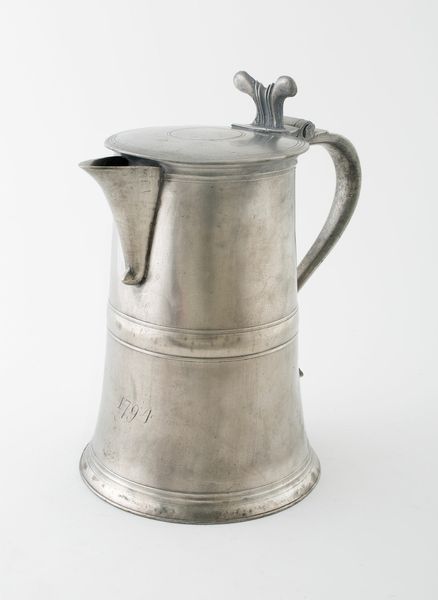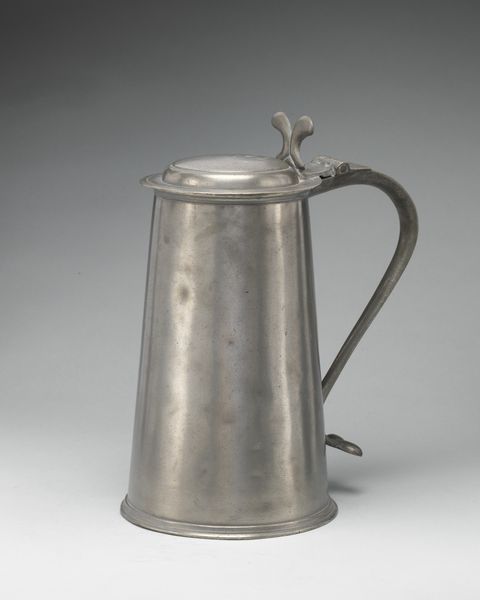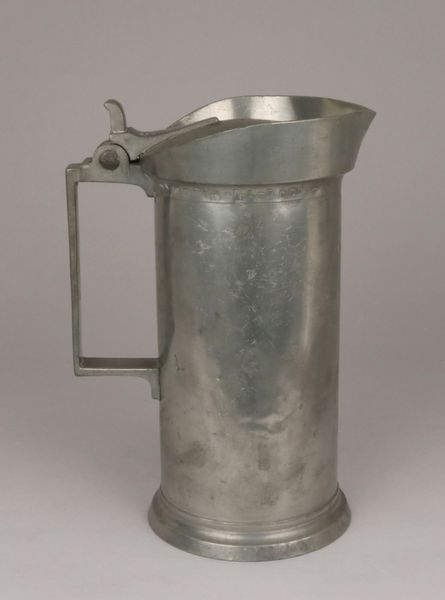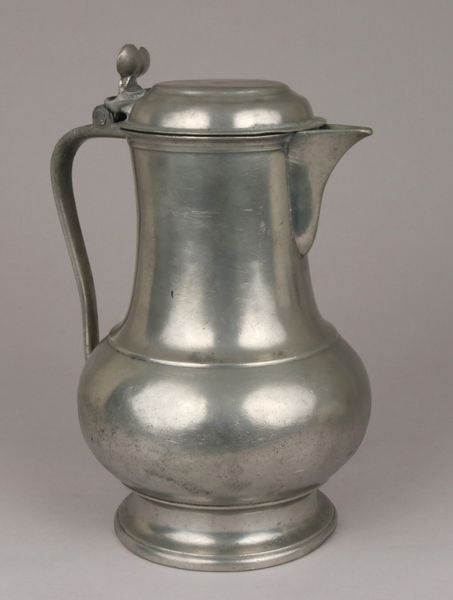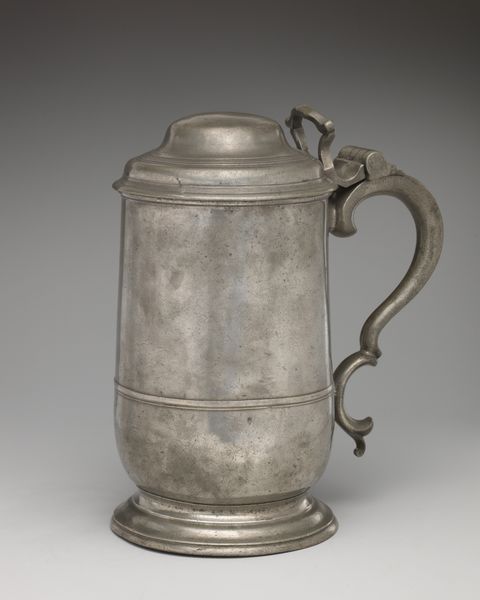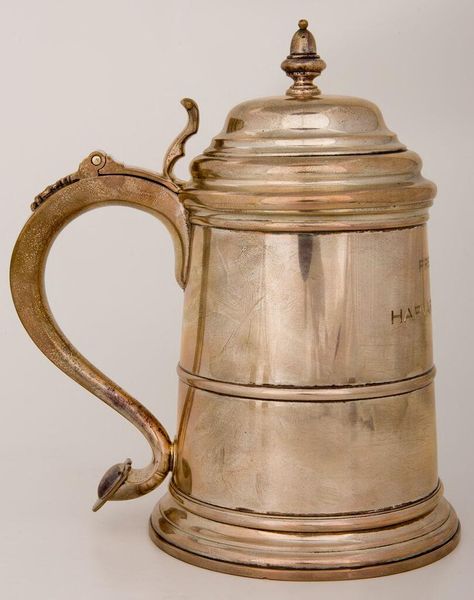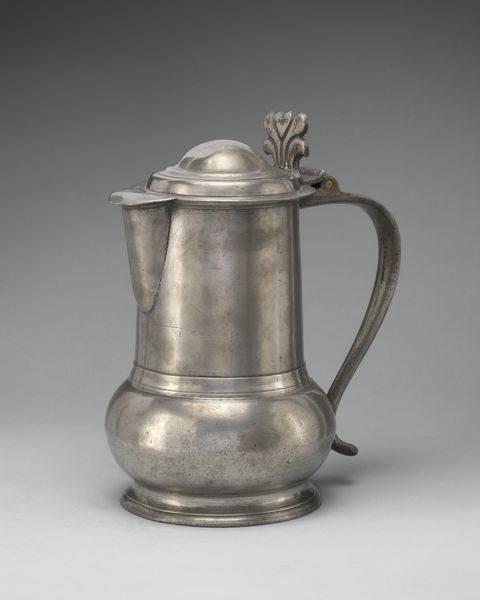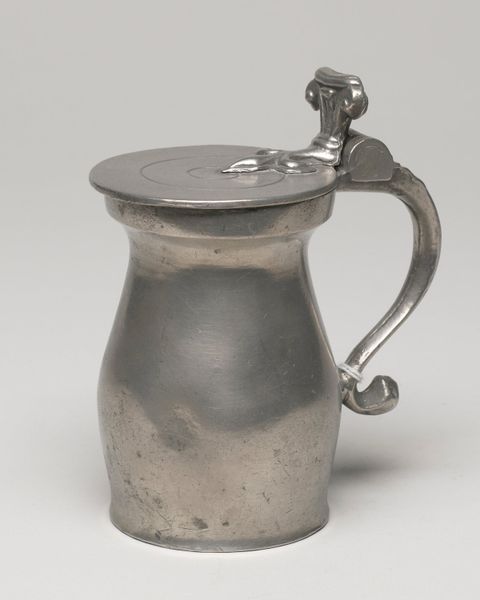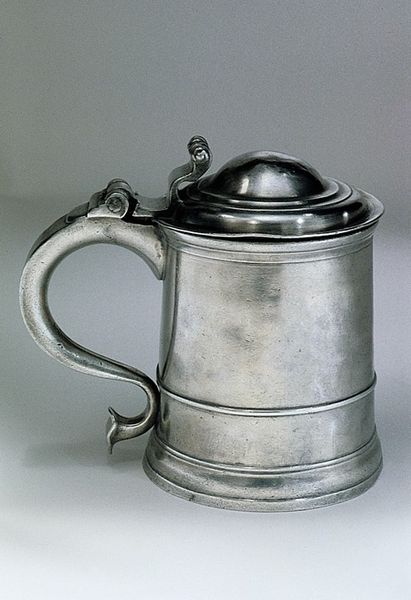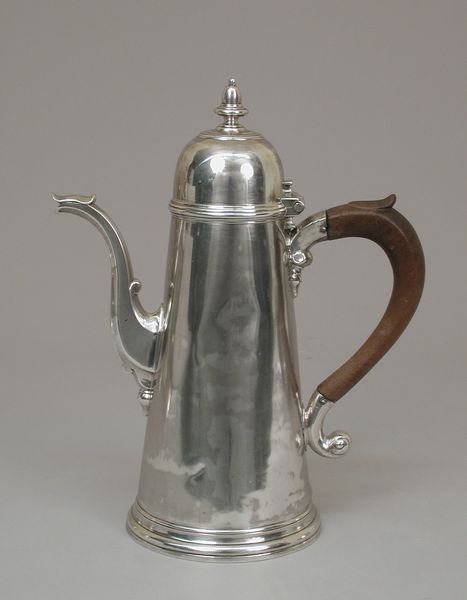
metal, sculpture
#
metal
#
stoneware
#
sculpture
#
ceramic
#
decorative-art
Dimensions: Height: 9 in. (22.9 cm)
Copyright: Public Domain
Curator: Welcome. We're looking at an 18th-century flagon, likely crafted by Johann I. Zimmermann. It's stoneware, with a metal lid and handle, a stunning example of decorative art from the period. Editor: My first impression is its imposing utilitarianism; the cold, grey stoneware almost feels like a silent declaration of purpose. It is unpretentious in form, but demands your attention in scale. Curator: Indeed. Consider the craftsmanship. The flagon’s body is cylindrical, flaring gently at the base for stability, while the lid has a subtle, stepped pyramidal finial. The handle shows delicate filigree, a touch of refinement amid the utilitarian design. Semiotically, the object merges stability with a flair that signals status. Editor: It’s easy to become mired in the details, when the purpose and politics behind such items need unearthing, too. Flagons like these weren’t merely decorative. Who was it produced for? And what social rituals would it have facilitated, I wonder. Access to alcohol wasn’t neutral—it had implications for community building, social control, gender dynamics… Curator: An insightful observation. Yet, from a structuralist standpoint, it echoes the prevalent aesthetic codes of the time: an equilibrium between functional design and restrained embellishment. Its visual impact is derived precisely from this balance. Editor: Balance, perhaps, but not equity. Were those benefiting from its use the same ones crafting and sourcing the materials? I am interested in who profited from its trade, as that will help tell a fuller history of its time. Curator: Of course, context is everything, but looking solely at its aesthetic values, its presence evokes an era of understated luxury. Editor: Understated for some, I would add, attained at a visible cost to others. Thanks to visual objects such as this flagon, however, we have physical, cultural objects around which discussions on both structure and larger historical context can come alive! Curator: A powerful intersection of aesthetics and cultural awareness. I believe we’ve revealed much to consider. Editor: It is hoped our analysis promotes the important work of acknowledging multiple truths that an object can signify, then and now.
Comments
No comments
Be the first to comment and join the conversation on the ultimate creative platform.
